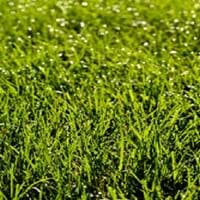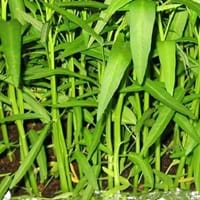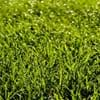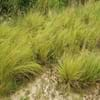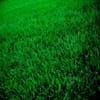Life Span
Perennial
Annual and Perennial
Origin
Southern Asia, India
India
Types
Not Available
Not Available
Number of Varieties
Not Available
Habitat
Warmer regions
subtropical regions, Tropical regions
USDA Hardiness Zone
6-11
8-15
Sunset Zone
H1, H2, 5, 6, 7, 8, 9, 10, 12, 13, 14, 15, 16, 17, 18, 19, 20, 21, 22, 23, 24
21,22
Habit
Mat-forming
Spreading
Flower Color
Not Available
White, Lavender
Flower Color Modifier
Bicolor
Not Available
Fruit Color
Not Available
Green, Reddish Plum
Leaf Color in Spring
Gray Green, Dark Green
Green
Leaf Color in Summer
Light Green
Green
Leaf Color in Fall
Gray Green, Dark Green
Green
Leaf Color in Winter
Gray Green, Dark Green, Tan
Green
Leaf Shape
Arrowhead
Long Elliptic
Plant Season
Spring, Summer, Fall, Winter
Spring, Summer, Fall, Winter
Sunlight
Full Sun
Full Sun, Partial Sun
Growth Rate
Fast
Very Fast
Type of Soil
Clay, Loam, Sand
Clay, Loam, Sand
The pH of Soil
Acidic, Neutral, Alkaline
Acidic, Neutral, Alkaline
Soil Drainage
Well drained
Poorly Drained
Bloom Time
Indeterminate
Indeterminate
Tolerances
Pollution, Salt, Soil Compaction
Wet Site
Where to Plant?
Container, Ground
Container, Ground, Pot
How to Plant?
Seedlings
Seedlings
Plant Maintenance
Medium
Medium
Watering Requirements
Average Water Needs
Requires regular watering
In Summer
Lots of watering
Lots of watering
In Spring
Moderate
Moderate
In Winter
Average Water
Average Water
Soil pH
Acidic, Neutral, Alkaline
Acidic, Neutral, Alkaline
Soil Type
Clay, Loam, Sand
Clay, Loam, Sand
Soil Drainage Capacity
Well drained
Poorly Drained
Sun Exposure
Full Sun
Full Sun, Partial Sun
Pruning
No pruning needed
Remove damaged leaves, Remove dead branches, Remove dead leaves
Fertilizers
Apply 3-1-2 or 4-1-2 ratio, Nitrogen
All-Purpose Liquid Fertilizer
Pests and Diseases
Red blotch
Bacterial leaf spot, Damping-off, Root rot
Plant Tolerance
Pollution, Salt, Soil Compaction
Drought
Flowers
Insignificant
Showy
Flower Petal Number
Single
Single
Foliage Texture
Fine
Medium
Foliage Sheen
Matte
Matte
Attracts
Flying insects, Insects
Birds, Hens
Allergy
breathing problems, Eye irritation, Hives, Itchiness, Runny nose, sneezing, Throat itching, Whooping Cough
Not Available
Aesthetic Uses
Ground Cover, Landscape Designing
Farmland
Beauty Benefits
Skin irritation, Skin Problems
Not Available
Edible Uses
Insignificant
Yes
Environmental Uses
Air purification, Prevent Soil Erosion, soil stabilisation
Air purification
Medicinal Uses
Cures constipation, Cures foot fissures, Digestive disorders, Eliminate toxins, Fatigue, Halitosis, Improves Breast milk production, Increase red blood cells, Insomnia
Anti-ageing Benefits, Antidiabetic, Reduces toothache, Skin Diseases
Part of Plant Used
Leaves, Stem
Leaves, Shoots, Stem
Other Uses
Animal Feed, Cattle Fodder, Used as Ornamental plant
Used in curries, soups, stews
Used As Indoor Plant
Insignificant
Sometimes
Used As Outdoor Plant
Yes
Yes
Garden Design
Lawns and Turf
Edible, Herb / Vegetable, Tropical, Water Gardens
Botanical Name
CYNODON dactylon
IPOMOEA aquatica
Common Name
Bermuda Grass
Swamp Cabbage, Swamp Morning Glory, Water Spinach
In Hindi
बरमूडा घास
Water Spinach
In German
Bermuda Gras
Wasser-Spinat
In French
l'herbe des Bermudes
Épinards d'eau
In Spanish
Grama
La espinaca de agua
In Greek
Αγριάδα
Σπανάκι νερό
In Portuguese
grama Bermuda
Espinafre de água
In Polish
Trawa Bermuda
Szpinak wodny
In Latin
Bermuda Grass
Water Spinach
Phylum
Magnoliophyta
Spermatophyta
Class
Liliopsida
Magnoliopsida
Order
Cyperales
Solanales
Family
Poaceae
Convolvulaceae
Genus
Cynodon Rich
Ipomoea
Clade
Angiosperms, Commelinids
Angiosperms, Asterids, Eudicots
Tribe
Chlorideae
Ipomoeeae
Subfamily
Chloridoideae
Not Available
Importance of Bermuda Grass and Water Spinach
Want to have the most appropriate plant for your garden? You might want to know the importance of Bermuda Grass and Water Spinach. Basically, these two plants vary in many aspects. Compare Bermuda Grass and Water Spinach as they differ in many characteristics such as their life, care, benefits, facts, etc. Every gardener must at least have the slightest clue about the plants he wants to plant in his garden. Compare their benefits, which differ in many ways like facts and uses. The medicinal use of Bermuda Grass is Cures constipation, Cures foot fissures, Digestive disorders, Eliminate toxins, Fatigue, Halitosis, Improves Breast milk production, Increase red blood cells and Insomnia whereas of Water Spinach is Anti-ageing Benefits, Antidiabetic, Reduces toothache and Skin Diseases. Bermuda Grass has beauty benefits as follows: Skin irritation and Skin Problems while Water Spinach has beauty benefits as follows: Skin irritation and Skin Problems.
Compare Facts of Bermuda Grass vs Water Spinach
How to choose the best garden plant for your garden depending upon its facts? Here garden plant comparison will help you to solve this query. Compare the facts of Bermuda Grass vs Water Spinach and know which one to choose. As garden plants have benefits and other uses, allergy is also a major drawback of plants for some people. Allergic reactions of Bermuda Grass are breathing problems, Eye irritation, Hives, Itchiness, Runny nose, sneezing, Throat itching and Whooping Cough whereas of Water Spinach have Not Available respectively. Having a fruit bearing plant in your garden can be a plus point of your garden. Bermuda Grass has no showy fruits and Water Spinach has no showy fruits. Also Bermuda Grass is not flowering and Water Spinach is not flowering . You can compare Bermuda Grass and Water Spinach facts and facts of other plants too.
